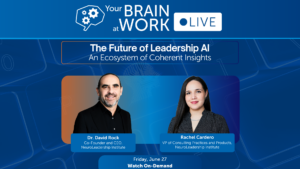We talk a lot about million- and billion-dollar companies taking a stand against bias and racism. But there’s an institution whose stakes might be even higher: education.
Now more than ever, American colleges and universities must confront the nation’s ongoing racial and political turmoil. Schools that have been historically thought of as liberal environments that promote equality and diversity are now faced with students publicly identifying issues of racism and bigotry on their campuses.
These schools have students and staff from diverse backgrounds, political beliefs, and life experiences, all of which have led to the clashing of cultures and favoring of some groups over others. As institutes that share the goal of educating young people, they must make it a priority to demonstrate the right behaviors, confront their own mistakes regarding racial issues, and create a sense of allyship around campus.
So, how can they do this?
1. Create and unite under a common goal
The first step to eliminating racism and bigotry from college campuses is helping students and faculty alike share that priority. Not only will this bring the problem of racism into focus; it will also create an ingroup, or a group that shares an identity, such as a common goal.
Ingroups do incredible things to the brains of their members, promoting much higher levels of inclusivity and allowing for elevated empathy between members. Humans naturally place unfamiliar people in an outgroup as a function of an evolutionary survival method. This forces them to be wary of that outgroup member, for fear that they might do them harm.
As a result, college students (and faculty) may inadvertently sort each other into ingroups and outgroups if they come from different childhood backgrounds or study different subjects across different departments.
However, having a common goal has shown to be one of the most powerful tools for creating a universal ingroup from outgroup members. This is often shown in teams who share the common goal of winning in their respective sports. But it applies equally to intellectual arenas, too.
2. Listen deeply and learn
By establishing the common goal of eliminating racism and minimizing bias, students and teachers from all backgrounds should become more willing to listen to one another and truly empathize. This starts with admitting that you do not know everything and are open to listening deeply and growing.
One of NLI’s most common sayings is “If you have a brain, you have bias.” As human beings, we each must make a daily effort to learn of and combat our own unconscious biases. We must resist the urge to make quick assumptions about people based solely on their appearance, and work hard to find what we have in common.
Part of this learning process is making mistakes, growing from them, and having “clumsy conversations,” or those in which people can ask questions about or discuss uncomfortable topics (say, around race) with good intentions. These clumsy conversations are essential for growth, and campus members must portray them in a positive light.
One caveat: Clumsy conversations don’t give people license to be combative or accusatory; rather, educational. Combative conversations only make each party defensive, pushing them to justify their actions. Ideally, the first step, uniting under a common goal, should make these clumsy conversations easier.
3. Create a culture of allyship by educating one another
Awareness of an issue isn’t enough. In order to truly make a change, people must also take action to advocate on others’ behalf.
One word for this advocacy is “allyship,” and the NeuroLeadership Institute defines it as: “when groups and individuals are aware that aspects of their identities hold more power and influence than others and use their advantaged positions to advocate for people in less advantaged positions.”
Students, teachers, and staff alike must use what they’ve learned to be allies for their communities. This requires that they each make it a habit to listen, learn, and advocate for those who hold less power and influence than themselves.
This can include a white professor advocating on behalf of their minority students just as it can include a minority male student advocating for a white female student.
In both cases, the ally will use the more influential aspect of their identity to lift the voices of or provide opportunity for someone who is at a disadvantage, regardless of the stereotypic boundaries people may perceive.
In building these habits, the new environment can promote further unification and learning around allyship and help to end the cycle of systemic bias—and more explicit forms of racism—on college campuses.
Starting on the right foot
Starting this semester, colleges and universities must re-examine issues of racism and bias on their campuses. The stakes are too high to treat societal issues as simply existing “out there,” and that campuses are immune to biased behavior.
If they manage to unite their communities, learn from one another, and begin to practice the habits of allyship, universities can set a scholarly example both for the minds they are molding and the country as whole.
[action hash= “a970c252-bb22-42f5-94a3-b51b4777ca4a”]






